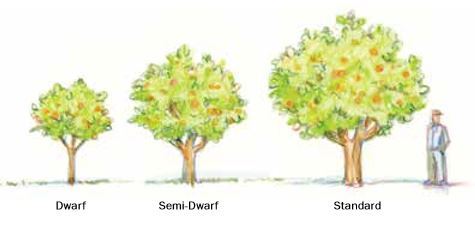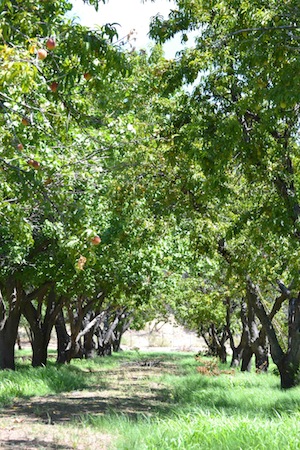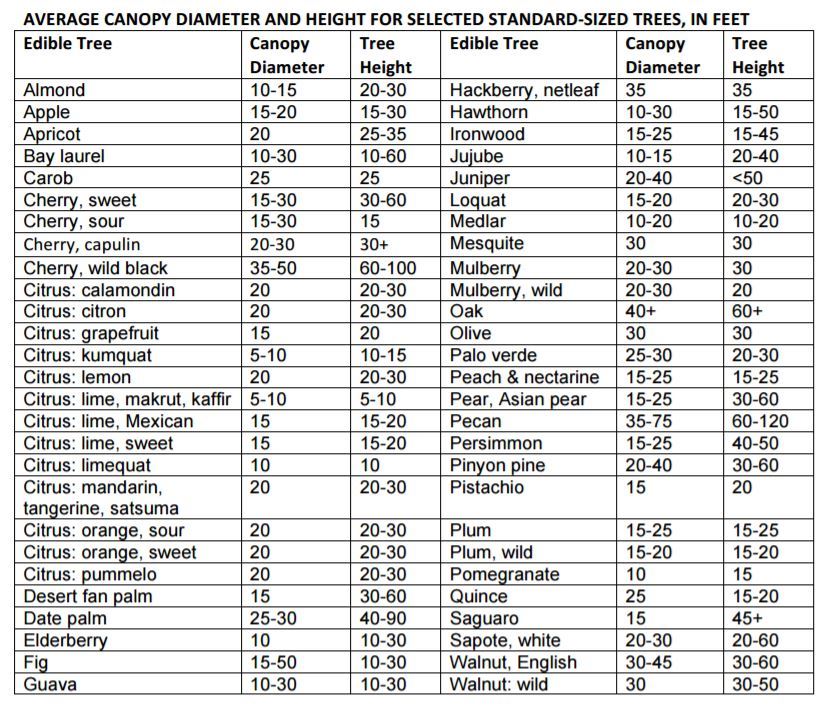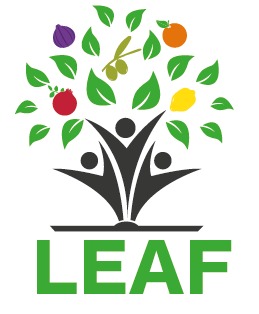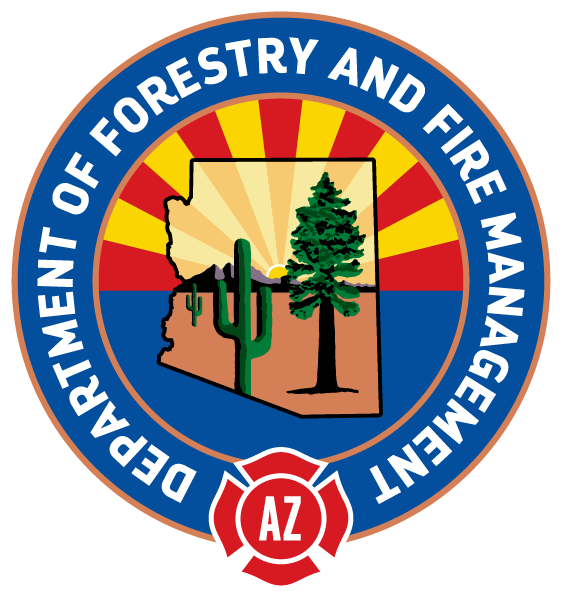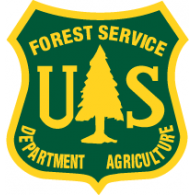Average Tree Sizes Click Here for a PDF of Average Tree SizesTree size varies with a tree’s age, planting environment, water supply and pruning. Knowing a tree’s full potential size will help you choose the spacing and number of trees for your site. When planning your future orchard, consider the three-dimensional layout, and leave plenty of space for mature trees, walkways and understory plants. When selecting a fruit tree, you may have three options for size: dwarf trees grow about 8 to 10 feet tall, semi-dwarf trees reach 12 to 15 feet, and standard size trees grow to 15 feet or more. In general, you can assume that the mature canopy diameter (the width of the tree) will be the same as the height. However, this is not always the case—pears naturally have a tall, narrow form, while plums and peaches have a spreading form. Although trees can be trained to fit smaller vertical and horizontal spaces through careful pruning and attention, it is best to plan for a full-sized tree. See the table of Average Canopy Diameter and Height for Standard-Sized Trees for information on selected trees. Additional information on tree sizes is available at the Arizona Edible Tree Directory. Dwarf and Semi-dwarf Trees Dwarf and semi-dwarf trees are available for selected fruit and nut tree varieties—typically apple, pear, cherry and some citrus. Trees such as plum, peach and almond have smaller mature sizes, and are not usually available as dwarf trees. Dwarf and semi-dwarf trees are created by grafting the bud or shoot of a known fruit variety onto a compatible rootstock of the same species that limits the potential size of the tree. Grafting is a standard practice in fruit and nut tree propagation, and most nurseries will carry a selection of dwarf and semi-dwarf trees. Dwarf and semi-dwarf trees are smaller, but the fruit size is the same. The quantity of fruit will be less than a standard tree produces. Pruning Standard-sized trees to Limit Size Standard-sized tree varieties can be pruned and shaped to keep them smaller than their potential mature size. Most edible trees can be pruned or “trained” to fit smaller spaces. Some respond very well to pruning such as bay laurel, and can be made into tree sculptures and hedges. Some varieties of pear, apple, fig, peach, pomegranate and other fruit trees can be trained to grow along two dimensions, such as along a wall or border, a technique called “espalier.” Pruning of the primary shoot when a fruit or nut tree is young will encourage lower side branches to develop and limit the height of the tree. See CARE - Thinning and Pruning for more information. Avoid making large pruning cuts on mature trees as they may have difficulty healing and be vulnerable to bacteria and diseases. Prune in the dormant months in winter and early spring. | In general, dwarf and semi-dwarf trees:
|
CAUTION: Never eat anything that is not properly identified. It is your responsibility to ensure that all fruits, nuts, seeds, pods and other edible products of trees and shrubs are correctly identified and safe to eat before eating them or serving them to others.
Copyright 2023
LEAF is under the fiduciary stewardship of the Arizona Community Tree Council, a 501(c)3 non-profit organization.
70 S Val Vista Drive, Suite A3-186, Gilbert, AZ 85296

